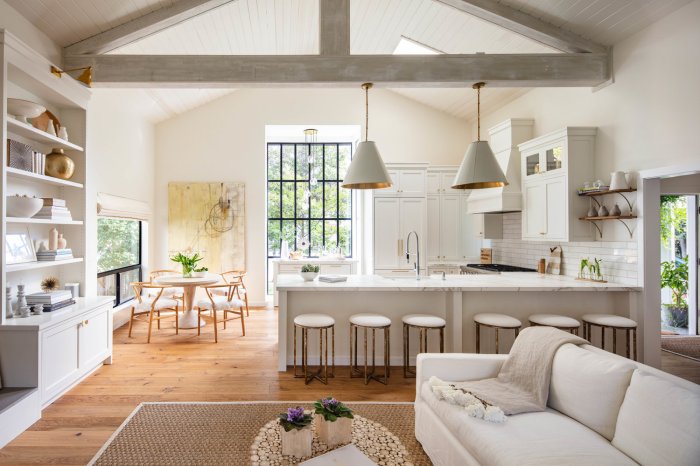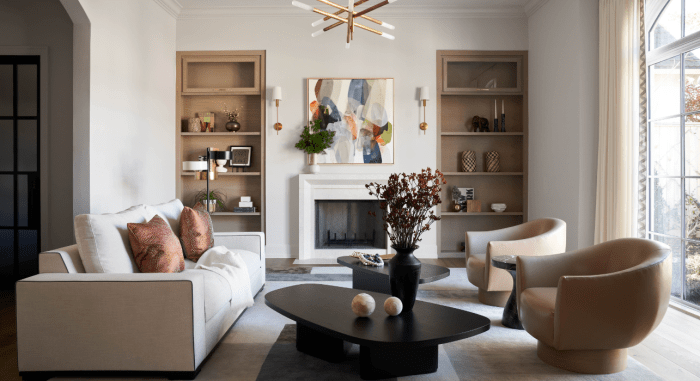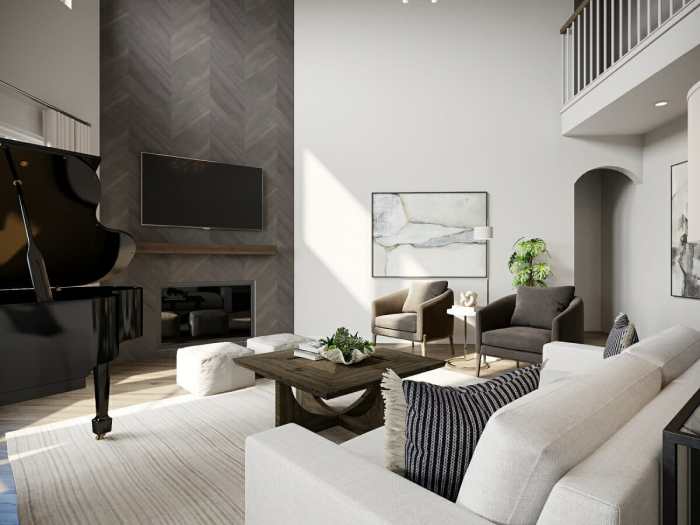Crafting a Timeless Home Interior: How to Design a Space That Endures

Embark on a journey into the realm of timeless home interior design with a focus on longevity and style. Discover the essential elements and strategies that pave the way for creating a space that transcends trends and stands the test of time.
Delve into the intricacies of designing a home interior that exudes sophistication and elegance, while also prioritizing durability and timeless appeal.
Elements of Timeless Home Interior Design
When it comes to creating a timeless home interior design, there are key elements that can help achieve a classic and enduring look. Incorporating quality materials, choosing a neutral color palette, and selecting classic furniture pieces are essential components in achieving a timeless aesthetic.
Incorporating Quality Materials
Using high-quality materials such as hardwood floors, natural stone countertops, and solid wood furniture can enhance the longevity of your home interior design. Quality materials not only stand the test of time in terms of durability but also add a sense of sophistication and elegance to the space.
Choosing a Neutral Color Palette
Opting for a neutral color palette, such as whites, grays, and earth tones, can help create a timeless look that never goes out of style. Neutral colors provide a versatile backdrop that can easily be updated with different accessories or accent colors, ensuring that your home interior remains timeless for years to come.
Classic Furniture Pieces
Classic furniture pieces like a Chesterfield sofa, a farmhouse dining table, or a mid-century modern armchair can anchor your home interior design in a timeless aesthetic. These timeless furniture pieces have enduring appeal and can be mixed and matched with different styles over the years, making them a worthwhile investment for your home.
Layout and Space Planning
When it comes to designing a timeless home interior, the layout and space planning play a crucial role in creating a harmonious and functional space that will stand the test of time.
The Significance of an Open Floor Plan
An open floor plan is essential in achieving a timeless interior design as it creates a sense of flow and connectivity throughout the space. By eliminating unnecessary walls and barriers, an open layout allows natural light to permeate the space, creating a bright and airy atmosphere that feels inviting and spacious.
Tips for Balancing Furniture Placement
- Ensure there is enough space between furniture pieces to allow for easy movement and flow within the room.
- Consider the function of each piece of furniture and place them strategically to maximize both aesthetics and functionality.
- Pay attention to the scale of furniture in relation to the size of the room to maintain a balanced and harmonious look.
The Role of Natural Light
Natural light is a key element in enhancing the timeless appeal of a space. It not only brightens up the room but also creates a sense of warmth and comfort. By maximizing natural light through strategically placed windows, skylights, and glass doors, you can create a welcoming and timeless atmosphere in your home.
The Concept of Symmetry
Symmetry is a design principle that can contribute to a timeless interior by creating a sense of balance and order. By arranging furniture, decor, and architectural elements in a symmetrical manner, you can create a visually pleasing and harmonious space that exudes a classic and timeless feel.
Timeless Decorative Elements

When designing a timeless home interior, it is essential to incorporate decorative elements that will withstand changing trends and styles. By focusing on architectural details, statement pieces, sustainable decor, and textures, you can create a space that exudes timeless elegance.
Architectural Details
- Architectural details like crown molding and wainscoting can add a touch of sophistication and timelessness to any space. These elements have been used for centuries and continue to be popular in interior design.
- Consider incorporating these details in key areas of your home, such as the living room or dining room, to create a sense of grandeur and elegance.
Statement Pieces
- Invest in statement pieces, such as a classic leather sofa or a vintage chandelier, that will remain stylish and relevant throughout the years. These pieces can serve as focal points in your design and anchor the overall aesthetic.
- Opt for quality over quantity when selecting statement pieces, as well-chosen items will have lasting appeal and can be easily updated with accessories or accents.
Sustainable Decor
- Incorporating sustainable and eco-friendly decor elements not only benefits the environment but also adds a timeless quality to your interior design. Look for pieces made from natural materials like wood, bamboo, or recycled materials.
- Choose decor items that are durable and well-crafted to ensure longevity. By selecting sustainable pieces, you can create a timeless look that is also environmentally conscious.
Textures and Layering
- Adding textures and layering to your interior design can create depth and visual interest, making your space more inviting and dynamic. Consider incorporating different textures like wool, velvet, or silk to add richness to your decor.
- Layering elements such as rugs, throw pillows, and curtains can enhance the overall aesthetic of your space and create a cozy, lived-in feel. Experiment with different textures and materials to find the perfect balance for a timeless look.
Maintenance and Longevity

When designing a timeless home interior, considering maintenance and longevity is crucial to ensure that your space remains beautiful and functional for years to come. By choosing durable materials, future-proofing your design, investing in quality pieces, and incorporating flexibility, you can create a space that stands the test of time.
Choosing Durable Materials
Selecting materials that are known for their durability and low maintenance requirements is essential for a timeless home interior. Opt for materials like hardwood floors, granite countertops, and leather furniture that are not only aesthetically pleasing but also long-lasting. These materials can withstand daily wear and tear, reducing the need for frequent replacements or repairs.
Future-Proofing Your Design
To ensure the longevity of your home interior design, it's important to future-proof your choices. Avoid following fleeting trends and instead focus on classic styles that have proven to withstand the test of time. By incorporating timeless elements like neutral color palettes, clean lines, and simple furniture pieces, you can create a design that remains relevant for years to come.
Investing in Quality Pieces
While it may be tempting to opt for budget-friendly furniture and decor pieces, investing in quality items is key to achieving a timeless look. High-quality pieces are more durable and less likely to show signs of wear and tear over time.
By prioritizing craftsmanship and longevity over trends, you can create a space that exudes sophistication and elegance.
Role of Flexibility in Design Choices
Flexibility in design choices allows you to adapt to evolving styles while maintaining timelessness in your home interior. Consider incorporating versatile pieces that can easily be updated with accessories or new upholstery to reflect current trends. By striking a balance between classic and contemporary elements, you can create a space that remains fresh and inviting for years to come.
Ultimate Conclusion

In a world where trends come and go, the art of designing a timeless home interior shines brightly. By incorporating key elements, thoughtful layouts, and durable materials, you can create a space that remains relevant and captivating for years to come.
FAQ Overview
How important is natural light in achieving a timeless interior design?
Natural light plays a crucial role in enhancing the timeless appeal of a space by creating a sense of openness and warmth.
Why is it essential to choose a neutral color palette for a timeless look?
Neutral colors provide a versatile backdrop that allows for easy integration of different styles and decor elements over time.
How can flexibility in design choices contribute to maintaining timelessness?
Flexibility allows for adaptation to evolving styles while ensuring the overall design remains timeless and relevant.

